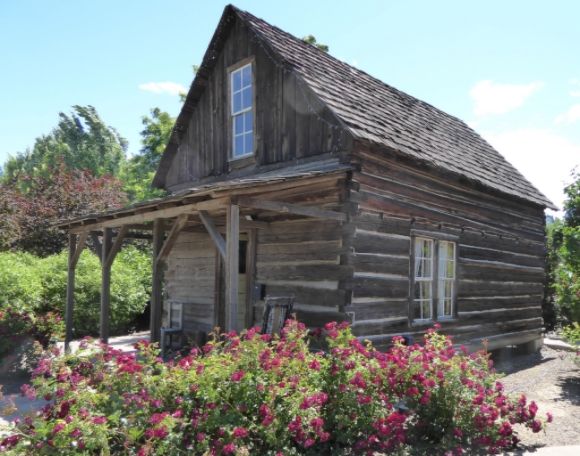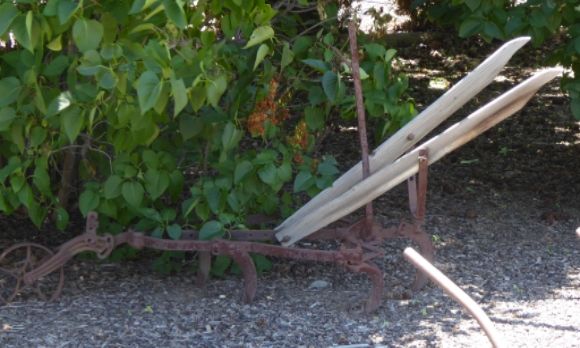The Homestead Act of 1862 authorized the sale of public lands to promote settlement in the west. To claim a homestead, American citizens or people eligible to become citizens could record a claim, cultivate the ground, build a house at least 12-by-14-feet and live on the parcel for five years. In return, the United States would grant them title to 160 acres of land.
In 1879, Monrod Fix, a carpenter by trade, built the homestead house now displayed at the Heritage Station Museum in Pendleton, Oregon. According to the Museum display:
“Homestead structures were small, but functional, constructed with locally available materials. Out buildings were added as needed. Logs for this 16-by-20-foot cabin were hauled 20 to 30 miles from the forest near Ukiah to the home site, hand-hewn, and chinked with homemade plaster and horsehair. German and English newspapers pasted underneath the wallpaper provided insulation.”
In the 1890s, a second floor was added to the house and the first floor was divided into two rooms. The loft area was divided by a central wall. The boys slept on one side and the girls on the other—the Fix family had nine children: two girls and seven boys.


 Shown above is the root cellar.
Shown above is the root cellar.
According to the Museum display:
“Early settlers used a root cellar to keep food cool. Root cellars were dug into the ground or built up by mounding soil over a wooden frame. Temperatures remained at 50 to 60 degrees year round and were perfect for storing potatoes, apples, carrots and canned goods.”





 There was no indoor plumbing. The outhouse is shown above.
There was no indoor plumbing. The outhouse is shown above.
According to the Museum display:
“In the absence of indoor plumbing, the ‘privy’ provided toilet facilities. Located near—but not too near—the house, the average outhouse measured three to four feet square and seven feet high. A box with a hole served as the toilet. An outhouse might be a ‘one holer’ or ‘two holer’, depending upon seating capacity. The outhouse was set over a trench dug five feet in the ground. When necessary, the outhouse was moved to a new trench.”





The Barn
According to the Museum display:
“Homesteaders often built their barn before their home. Barns are important because they protect the family’s most valuable possession, their animals. A section of the barn is used to store feed, harness, and tools. Hay for winter feed is stored in the loft. Some barns included a blacksmith shop where metal was forged into nails, hinges, harness rings, and other implements. This museum building replicates the floor plan of a common barn and was built on the museum grounds using salvaged boards.”








More Museums
Museums 101: Ranch and Sawmill (Photo Diary)
Museums 101: Settlers in the High Desert (Photo Diary)
Museums 101: A Homesteader's Shack, a Blacksmith Shop, and a Paint Store (Photo Diary)
Museums 101: Tar Paper Shacks and Balloon Houses (Photo Diary)
Museums 101: An Overview of Hell Roarin' Gulch (Photo Diary)
Museums 101: Life in Libby, Montana (Photo Diary)
Museums 101: Life in the Past (Photo Diary)


